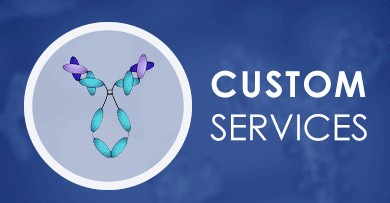 Loading...
Loading...

PLK1
 Loading...
Loading...Anti-PLK1 Products
-
- Species Reactivity: Human
- Type: Rabbit IgG
- Application: WB, IF, FC
-
- Species Reactivity: Human
- Type: Mouse IgG1, κ
- Application: WB
-
- Species Reactivity: Human
- Type: Mouse IgG2a, κ
- Application: ELISA
- Mouse Anti-PLK1 Recombinant Antibody (clone 1D1) (VS3-QX888)
-
- Derivation: Mouse
- Species Reactivity: Human
- Type: Mouse IgG1
- Application: WB, IHC, ICC, FC, ELISA
-
- Derivation: Mouse
- Species Reactivity: Human, Mouse
- Type: Mouse IgG1
- Application: WB, IHC, ICC, FC, ELISA
-
- Derivation: Mouse
- Species Reactivity: Human, Mouse
- Type: Mouse IgG1
- Application: WB, ELISA
-
- Species Reactivity: Human
- Type: Rabbit IgG
- Application: WB, ICC, IF, FC
-
- Species Reactivity: Human, Rat
- Type: Rabbit IgG
- Application: WB, ICC, IF, IP
-
- Species Reactivity: Human
- Type: Rabbit IgG
- Application: WB
-
- Derivation: Mouse
- Species Reactivity: Human
- Type: Mouse IgG1
- Application: WB, ELISA, FC, IHC
-
- Species Reactivity: Human
- Application: FC, ICC, IF, WB
- Rabbit Anti-NHP PLK1 Recombinant Antibody (VS-1024-XY396) (VS-1024-XY396)
-
- Species Reactivity: Human, Non-human primate, Rat
- Type: Rabbit IgG
- Application: WB, IHC, IP
-
- Antibody Host: Mouse
- Antibody Reactivity: Human
- CytoStream™ Mouse Anti-PLK1 Recombinant Antibody (VS-0225-XY179) (VS-0225-XY179)
-
- Species Reactivity: Human, Mouse
- Type: Mouse IgG1, kappa
- Application: FC
- Mouse Anti-PLK1 Recombinant Antibody (clone 3C11) (VS7-0425-WR634)
-
- Species Reactivity: Human, Mouse
- Type: Mouse IgG1
- Application: WB, IHC, FC
- Anti-PLK1 Immunohistochemistry Kit (VS-0325-XY1674)
-
- Species Reactivity: Human, Mouse, Rat
- Target: PLK1
- Application: IHC
- Anti-Mouse PLK1 Immunohistochemistry Kit (VS-0525-XY5489)
-
- Species Reactivity: Human, Mouse
- Target: PLK1
- Application: IHC
- Anti-Human PLK1 Immunohistochemistry Kit (VS-0525-XY5488)
-
- Species Reactivity: Human
- Target: PLK1
- Application: IHC
- Anti-Monkey PLK1 Immunohistochemistry Kit (VS-0525-XY5490)
-
- Species Reactivity: Human, Mouse, Rat, Monkey
- Target: PLK1
- Application: IHC
-
- Derivation: Phage display library screening
- Species Reactivity: Human
- Type: IgG
- Application: WB, IHC, ICC
Can't find the products you're looking for? Try to filter in the left sidebar.Filter By Tag
Our customer service representatives are available 24 hours a day, from Monday to Sunday. Contact Us
For Research Use Only. Not For Clinical Use.
Background
Cancer-related genes, Disease related genes, Enzymes, Metabolic proteins, Potential drug targets
Intracellular
Cell type enhanced (Early spermatids, Spermatocytes, Extravillous trophoblasts, Erythroid cells, Cytotrophoblasts)
Immune cell enriched (T-reg)
Low cell line specificity
Interacts with CEP170 and EVI5. Interacts and phosphorylates ERCC6L. Interacts with FAM29A. Interacts with SLX4/BTBD12 and TTDN1. Interacts with BUB1B. Interacts (via POLO-box domain) with the phosphorylated form of BUB1, CENPU and CDC25C. Interacts with isoform 3 of SGO1. Interacts with BORA, KIF2A and AURKA. Interacts with TOPORS and CYLD. Interacts with ECT2; the interaction is stimulated upon phosphorylation of ECT2 on 'Thr-444'. Interacts with PRC1. Interacts with KIF20A/MKLP2 (when phosphorylated), leading to the recruitment at the central spindle. Interacts (via POLO box domains) with PPP1R12A/MYPT1 (when previously phosphorylated by CDK1). Part of an astrin (SPAG5)-kinastrin (SKAP) complex containing KNSTRN, SPAG5, PLK1, DYNLL1 and SGO2. Interacts with BIRC6/bruce. Interacts with CDK1-phosphorylated FRY; this interaction occurs in mitotic cells, but not in interphase cells. FRY interaction facilitates AURKA-mediated PLK1 phosphorylation. Interacts with CDK1-phosphorylated DCTN6 during mitotic prometaphase; the interaction facilitates recruitment to kinetochores. Interacts with CEP68; the interaction phosphorylates CEP68 (PubMed:25503564). Interacts (via POLO-box domain) with DCTN1 (PubMed:20679239). Interacts with CEP20 in later G1, S, G2 and M phases of the cell cycle; this interaction recruits PLK1 to centrosomes, a step required for S phase progression (PubMed:24018379). Interacts with HSF1; this interaction increases upon heat shock but does not modulate neither HSF1 homotrimerization nor DNA-binding activities (PubMed:15661742, 18794143). Interacts with HNRNPU; this interaction induces phosphorylation of HNRNPU in mitosis (PubMed:25986610). Interacts (via its N-terminus) to RIOK2 (PubMed:21880710). Interacts with KLHL22 (PubMed:24067371, 23455478).
Kinase, Serine/threonine-protein kinase, Transferase

